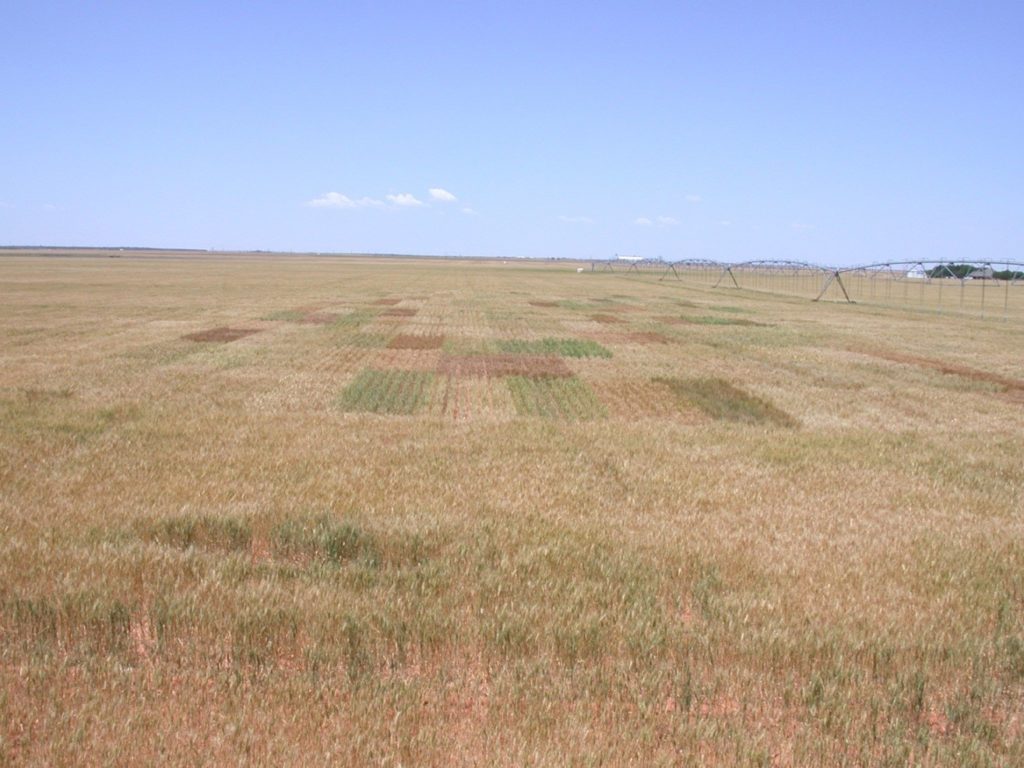by Dr. Calvin Trostle, Extension Agronomy, TAMU Soil & Crop Sciences, Lubbock, (806) 723-8432, ctrostle@ag.tamu.edu
Dr. Clark Neely, State Extension Small Grains Specialist, TAMU Soil & Crop Sciences, College Station, TX, cbneely@tamu.edu
In an August article in Texas Row Crops Newsletter we noted Texas A&M AgriLife Extension “Pick” wheat varieties for grain in the Texas High Plains. Since then additional Picks were published for hard red winter wheat for the Rolling Plains, Blacklands, and South Texas. Furthermore, Picks have been designated for soft red winter wheat in Blacklands and South Texas as well as spring and winter wheat Picks for South Texas. See these Picks lists at http://varietytesting.tamu.edu/files/wheat/docs/picks%20list/2017-2018%20Texas%20Wheat%20Grain%20Variety%20Picks.pdf
An additional consideration for many Texas wheat producers, wherever you are located, is an individual variety’s resistance/susceptibility to several disease and insect pests. Our observation is that Texas farmers are paying closer attention to several individual varietal traits in choosing wheat varieties. These are primarily leaf rust, stripe rust, wheat streak mosaic virus, Hessian fly, and greenbugs.
Incorporating tolerant or resistant varieties into your wheat production is part of a proven integrated pest management program. This has several potential benefits if a particular pest, stripe rust for example which has been common in the High Plains and beyond the past three years, in that good tolerance may make a fungicide application unnecessary, or perhaps you have a couple thousand acres of wheat which can’t be sprayed in timely fashion when a fast-moving disease issue like strip rust occurs.
Individual wheat varietal response to some of these pests may not be known (especially greenbug and wheat streak mosaic virus, to a lesser extent Hessian fly). In our annual Texas A&M AgriLife statewide wheat variety trial report from the 2017 harvest, a table has been updated on page 6 with our most recent pest ratings based on Texas ratings.
http://varietytesting.tamu.edu/files/wheat/docs/2017/2017Wheat-statewide-results.pdf
Pest response ratings are designated as resistant, moderately resistant, moderately susceptible, and susceptible. Resistance does not mean immunity, and a resistant variety to stripe rust might still hit an economic threshold and require treatment. Resistant varieties should still be scouted for specific pest issues (in part as noted below, resistance can break down).
How often do pest resistance ratings change?
Many varietal pest resistance ratings are stable for the commercial life of a variety, but changes do occur. Producers should annually check information such as the table above or check for AgriLife Extension updates to ensure they are aware of any changes. When a variety’s pest or tolerance rating changes it is usually toward a greater degree of susceptibility. This is because resistance breaks down, or perhaps there is now a new rust race or insect biotype that is predominant, to which the variety is no longer resistant. If a variety’s resistance rating improves over time, that is probably due to now proper recognition of the variety’s pest reaction (resistance is not likely to evolve or grow in a variety).
An example of declining resistance is TAM 111, which through 2014 was rated by Texas A&M AgriLife as moderately resistant to stripe rust. If you farmed with that assumption the past three years, you could have had significant stripe rust damage. Starting in 2015 observations indicated that TAM 111 was no longer resistant, and in fact has become fully susceptible. (This is a significant factor in the recent inconsistent performance of TAM 111 in the High Plains and why it is no longer a Pick grain variety).
Be sure to use AgriLife ratings that are based in Texas. Ratings from more northerly states may not be reliable due to different environmental conditions, or a particular pest may be infrequent there, thus reliable ratings are not obtained.
Ratings for Other Wheats
The above statewide report also has leaf rust and stripe rust ratings for soft red winter wheat characteristics (page 7). For questions on pest ratings on other Texas small grains, consult AgriLife Extension staff, or the the statewide oat variety trial reports at http://varietytesting.tamu.edu/wheat
Picture Caption:
Fig. 1. Irrigated wheat variety trial near Lamesa, TX May, 2017.
